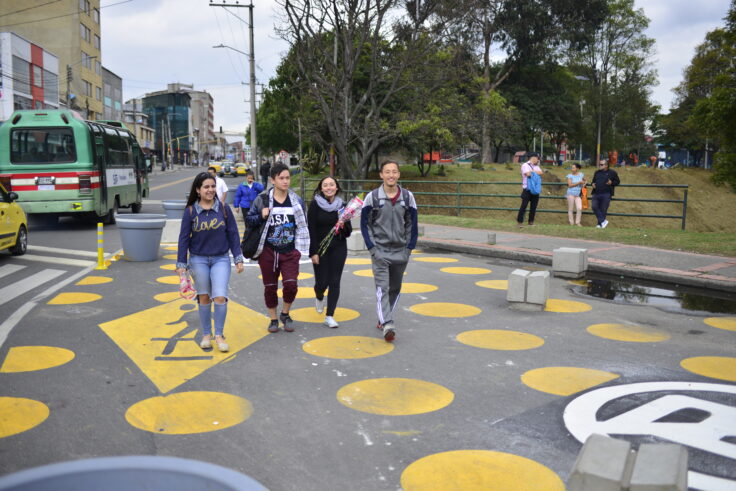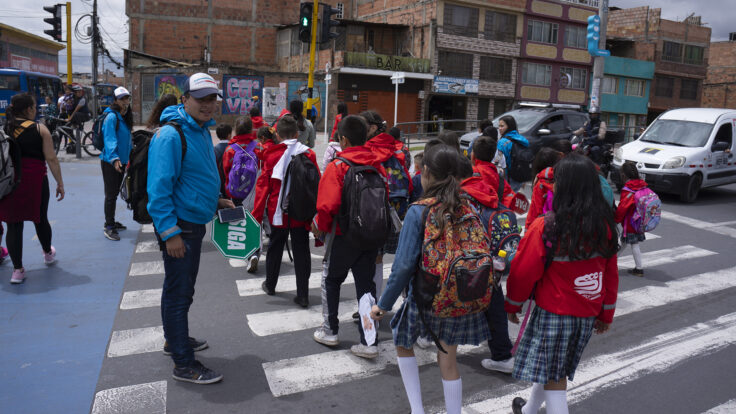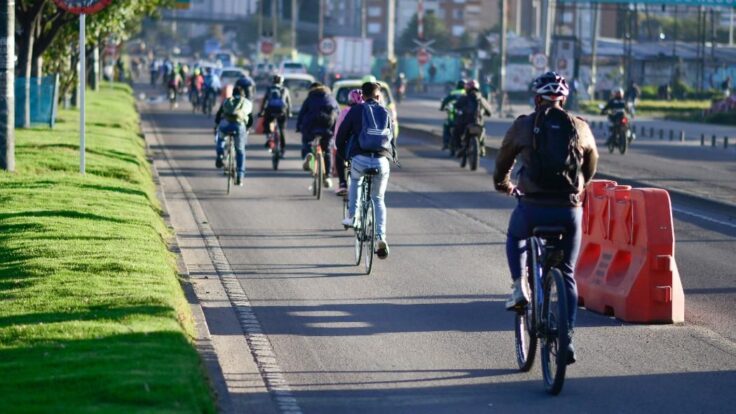May 08, 2023
Bogotá, Colombia’s Approach to Safe, Sustainable, and Accessible Transport
Download this Mobilize case study for more information on the comprehensive mobility strategies that earned Bogotá the 2022 Sustainable Transport Award.
By María Fernanda Ramírez and Patricia Calderón, Despacio.org
Colombia’s capital of Bogotá has grown tremendously over the last century. With over 7.5 million residents, such rapid growth has led to unequal urban development and sprawl that has impacted the way many communities experience daily life. As the city continues to boom, it has become necessary to rethink its streets and mobility systems to ensure that all populations have equal access to the city. Since the debut of the city’s landmark TransMilenio BRT system in 2000, it has continued to invest in transport infrastructure that looks towards the future.
As with many global cities, the disruptions of the COVID-19 pandemic has led Bogotá to rethink its approach to sustainable mobility, improve access and safety on its streets, and expand critical cycling and pedestrian networks. In a city where nearly a fifth of residents own private vehicles and congestion is persistent, the pandemic allowed Bogotá to renew its focus on transit, cycling, and street infrastructure that benefits all residents. As the winner of the 2022 Sustainable Transport Award (STA), Bogotá has committed to several notable efforts to reshape its transport systems as the city recovers from the pandemic. This includes: improving mobility for children, students, and families; addressing road safety and vehicle traffic concerns; and prioritizing cycling and electric buses.
IMPROVING ACCESS WITH NIÑOS PRIMERO (KIDS FIRST)
In the last few years, Bogotá has placed a focus on educating students and children about road safety and improving streetscapes so that everyone can walk and cycle more freely. Research has shown that children in Bogotá take 1.2 million trips for study-related purposes (58% of which are on foot) making them much more vulnerable to road accidents. In addition, on average, a person in Bogotá who earns minimum wage spends nearly 25% of their income on transportation, making walking and cycling the most affordable option for many families.


To address issues of safety and access, Bogotá began implementing a collection of family-friendly initiatives, such as Niños Primero, to make streets more pedestrian and cyclist-friendly. Managed by Bogotá’s Secretariat of Mobility and Secretariat of Education, Niños Primero instituted school safety zones and employed traffic calming measures to make roads around schools more accessible. A citywide road safety education campaign for students along with preferential lanes for school bus travel also helped to ensure students and families feel protected on their commutes. Niños Primero enrolled nearly 7,000 students in 2019, with another 3,000 enrolled in 2020, despite pandemic restrictions. By reducing unsafe trips to school overall, the program is providing healthier and more structured alternatives for students to travel independently, thus allowing more time for caregivers (typically women) to dedicate to other essential trips. With growing annual enrollment goals, Niños Primero will continue to help families across Bogotá save time and money while promoting safer mobility for all.

REDUCING SPEEDS FOR ROAD SAFETY
Children are particularly susceptible to speeding cars and have a higher mortality rate than adults when involved in accidents. The speed management of cars has been a key component of Niños Primero as well as Bogotá’s overall Vision Zero policies to mitigate traffic accidents and injuries. To address the broad challenge of road safety, the city brought together multiple municipal offices to enact more public safety measures and campaigns, road surveillance systems, and community engagement initiatives. With the increase in pedestrian and cycling traffic during the pandemic, the city set out to implement policies targeting cars exceeding speed limits. Cars traveling at high speeds have exponentially higher chances of injuring or killing pedestrians and cyclists.
Bogotá reduced the maximum speed limit to 50 kilometers-per-hour on most city streets and placed speed cameras throughout to regulate speeding vehicles. These new limits have helped reduce road-related deaths by 21% across 10 corridors in 2019 and 28% the following year. Other speed management policies include the implementation of traffic calming measures citywide, particularly around schools, with lower 30 kilometer-per-hour limits set in over 2,200 school zones. In recognition of its effective speed management policies, Bogotá received a Prince Michael International Road Safety Award in 2020.

PROMOTING SUSTAINABILITY WITH CYCLING AND E-BUSES
The pandemic also prompted Bogotá to revisit designs for its sidewalks, extend cycling networks, and explore interventions to promote sustainable alternatives to car use. For example, to comply with social distancing measures in 2020, the city developed a plan to redistribute street space in commercial areas by closing certain streets off and opening them exclusively for pedestrians. These types of open street interventions were relatively simple and low-cost, and continue to prove successful with residents.
In addition, given that public transit capacity was significantly reduced during the pandemic, many residents turned to cycling as their primary means of transport. The city responded by adding over 80 kilometers of temporary cycle lanes in 2020, on top of the city’s existing Ciclovía network of over 550 kilometers. According to a 2020 survey, 23% of public transit users in the city shifted to cycling as their primary means of transport — a transition that was eased by the city’s efforts to make cycling routes more accessible and safer for everyone. As a result, Bogotá saw cycling ridership increase from 7% to 13% at the height of the pandemic, and has turned 28 kilometers of temporary lanes into permanent ones.
As more commuters return to public transit, however, the city has now turned towards addressing air quality and rising emissions with a transition to electric buses. Given that much of the city’s current BRT fleet is in need of modernization, Bogotá has committed to acquiring over 1,485 pure electric buses which, upon full implementation, will make it the largest regional e-bus fleet of its kind. With this transition, the new e-buses will benefit an estimated 570,000 daily users while reducing carbon emissions by an estimated 155,000 tons a year. This is especially critical for the city’s low-income communities most reliant on public transit and most susceptible to the impacts of air pollution.

MOVING FORWARD
The city continues to work on a number of forward-thinking initiatives to prioritize safer, more sustainable, and more connected mobility for all residents. For example, the city opened a bidding process for a public bikeshare system in 2021 that will include special training and inclusion programs. It is also exploring initiatives related to freight micro-mobility for first and last mile delivery, license plate-based driving restrictions, and a District Care System to improve access to services for caregivers, families, and children.
Like in many global cities, the pandemic presented a number of challenges to Bogotá’s infrastructure, while also uncovering new opportunities to reimagine street and city life, prioritize social inclusion, and pilot creative interventions. With more innovative policies in the works, Bogotá continues to demonstrate that it can serve as a model for sustainable, resilient transport and mobility across the region.
